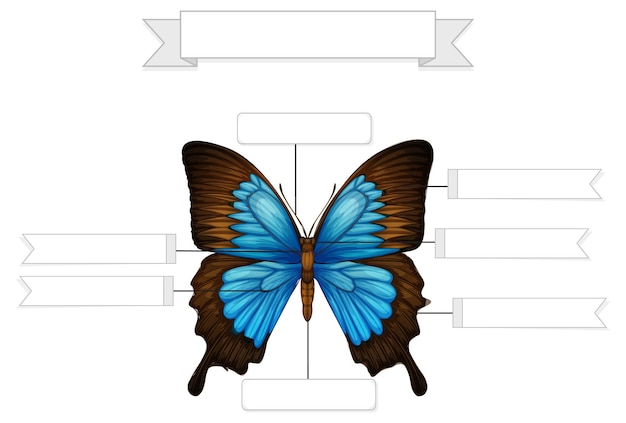Interesting Facts About the Blue Morpho Butterfly

Blue morpho butterflies are known for their stunning blue wings.
These butterflies are native to the rainforests of Central and South America.
The blue color of their wings is not due to pigment, but rather the reflection of light from microscopic scales.
Blue morphos have a wingspan of about 5-8 inches.
These butterflies are most active during the morning and late afternoon.
Blue morphos have short lifespans, often living only a few weeks.
They are known for their slow, graceful flight.
The underside of their wings is usually brown, providing camouflage.
Adult blue morphos primarily feed on rotting fruit and tree sap.
The bright blue coloration of their wings can vary in intensity depending on the angle and lighting.
Blue morphos are considered one of the largest and most beautiful butterfly species in the world.
The blue coloration of their wings helps them blend in with the sky, confusing predators.
Male blue morphos are typically more vibrant in color than females.
These butterflies are not poisonous to predators, but their bold colors act as a deterrent.
Blue morphos have a unique fluttering flight pattern, which helps them avoid being caught.
They have a wingspan that can rival a small bird’s.
Blue morphos are often sought after by collectors for their beauty.
These butterflies are highly sensitive to changes in their habitat, making them vulnerable to deforestation.
Interesting Facts About the Blue Morpho Butterfly part 2
Blue morphos undergo a complete metamorphosis, starting as an egg, then becoming a caterpillar, pupa, and finally an adult.
The scientific name for the blue morpho butterfly is Morpho menelaus.
Blue morpho butterflies are known for their iridescent blue coloration.
The vibrant blue color of their wings is believed to play a role in attracting mates.
Blue morphos have long, slender bodies with six legs and two antennae.
The blue coloration of their wings can fade over time as the scales wear away.
Blue morphos are highly prized in the eco-tourism industry, attracting visitors to rainforest regions.
These butterflies are often featured in artwork and jewelry due to their stunning appearance.
Blue morphos are capable of flying long distances, sometimes crossing over oceans.
Blue morphos are typically found in the understory of the rainforest, avoiding direct sunlight.
The bright blue color of their wings can be spotted from a distance, making them easy to track.
Blue morpho butterflies have a symbiotic relationship with certain plant species, aiding in pollination.
These butterflies have delicate mouthparts called proboscises, which they use to sip nectar.
Blue morphos are able to detect ultraviolet light, helping them navigate and find food sources.
Blue morphos are primarily active during the wet season when there is an abundance of nectar-producing flowers.
The emergence of a blue morpho butterfly from its chrysalis is a beautiful and delicate process.
The wings of blue morphos are so delicate that they can be easily damaged if handled improperly.
Blue morphos are often used as symbols of transformation and change due to their metamorphosis.
These butterflies are important indicators of environmental health, as their presence or absence can indicate the state of a particular ecosystem.
In some cultures, blue morpho butterflies are considered sacred and are associated with spiritual transformation.
Blue morphos have adapted to have elongated forewings, which increases their gliding ability.
The blue color on the wings of blue morphos is caused by the diffraction of light, similar to how a prism works.
The scales on the wings of blue morphos are arranged in such a way that the blue color appears iridescent, shimmering in different shades depending on the viewing angle.
Blue morphos have a defense mechanism called flash behavior, where they suddenly flash their wings open to startle predators.
The distinctive blue color of male blue morphos is believed to attract females for mating.
Blue morphos are known to migrate, flying long distances to find suitable breeding grounds.
The mesmerizing blue color of blue morpho butterflies has captivated humans for centuries, making them popular subjects in art, literature, and photography.

